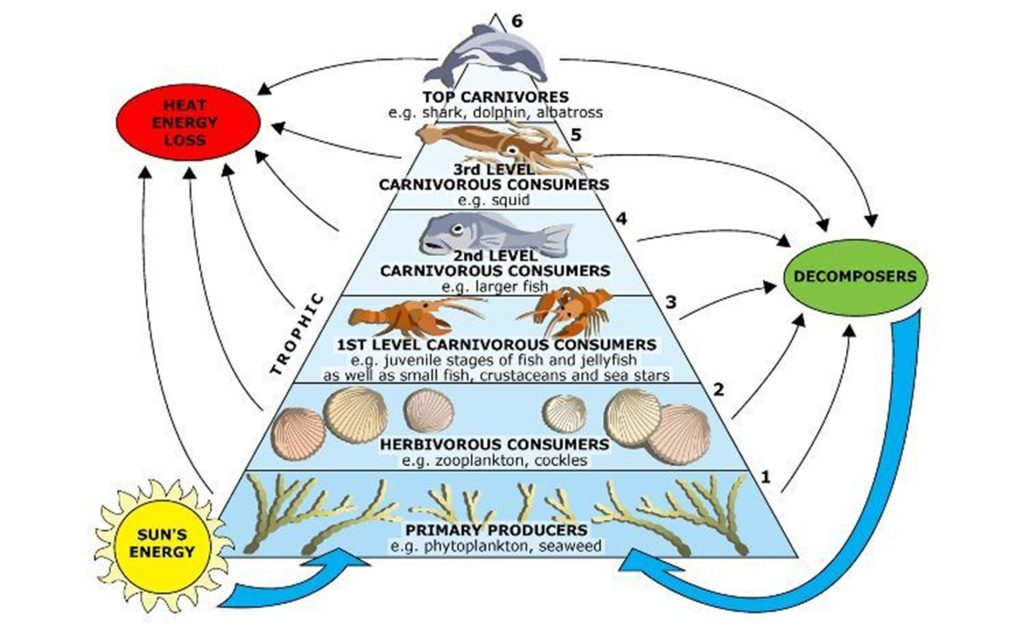
The trophic level of an organism is the position it occupies in a food chain or trophic pyramid. Each step up the food chain, from primary producers to higher-level consumers, represents an increase in the trophic level of the organism. Trophic levels indicate the amount of energy transferred from one organism to the next and provide an indication of the biomass at each step in the food chain.
An organism may occupy more than one trophic level. For example, a tuna is a predator that eats other fish, so it would occupy the top predator trophic level. However, tuna are also prey for larger predators such as sharks, so they would also occupy the prey trophic level.When organisms at the higher tropic level are removed from an ecosystem , it can have a cascading effect on the entire system. This can lead to a decrease in diversity, a decrease in the food available for organisms at the lower tropic levels, and an increase in competition among the remaining organisms in the system. This can lead to a decrease in the overall health of the ecosystem and can cause an imbalance in the ratio of predators to prey. In some cases, the removal of organisms from the higher tropic level can lead to the collapse of the entire system.

Food chain,Ecosystem,Environment,
